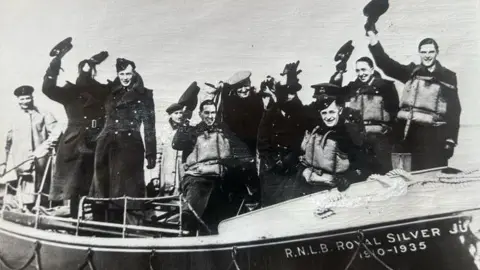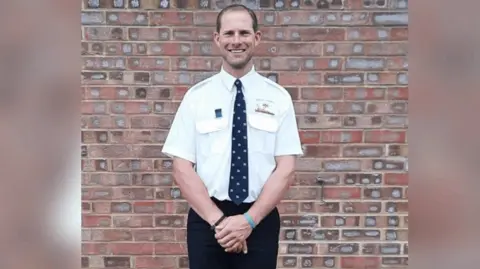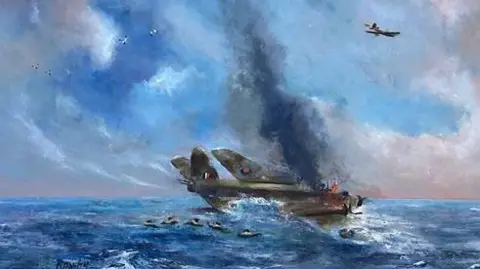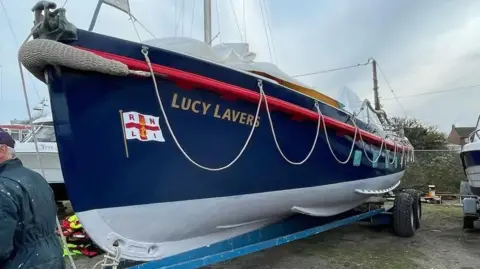Lifeboat station reflects on heroic WW2 crews
 RNLI
RNLIA lifeboat crew has marked the 80th anniversary of VE Day by reflecting on the RNLI's role in saving 6,376 lives during World War Two.
Its missions included battling icy conditions to rescue airmen from a ditched aircraft off the Norfolk coast on 18 December 1939, which involved lifeboats from Wells-next-the-Sea, Sheringham and Cromer.
Kent Cooper, whose grandfather W.G. Cooper was involved, said he felt honoured to continue the family tradition as a crew member at Wells.
Wells RNLI also paid tribute to crews on lifeboat Lucy Lavers, which was used during Operation Dynamo to rescue troops stranded on beaches in Dunkirk in 1940.
 RNLI
RNLIMr Cooper said he felt "proud to represent the RNLI and honour my grandfather".
The aircraft forced to ditch that night had been shot during the Battle of the Heligoland Bight, one of the first major confrontations between the RAF and the German Luftwaffe.
"He never spoke much about that night," Mr Cooper said.
"But I feel the weight of their sacrifice and the bond between the lifeboat crews and the airmen they tried so hard to save."
 RNLI
RNLIIn a social media post, Wells RNLI said: "We remember not only the brave souls on the front lines, but also the extraordinary efforts made at sea, including those of the lifeboat Lucy Lavers.
Its first mission was part of Operation Dynamo, the evacuation of Dunkirk in May 1940, one of 19 RNLI craft to be called upon.
It was sent to Ramsgate and taken over by Royal Navy crews.
After the war, the lifeboat later became part of the relief fleet at Wells-next-the-Sea and Sheringham.
The post paid tribute to the crews of Lucy Lavers for "their courage, sacrifice, and unwavering duty".
 RNLI
RNLIFollow Norfolk news on BBC Sounds, Facebook, Instagram and X.
